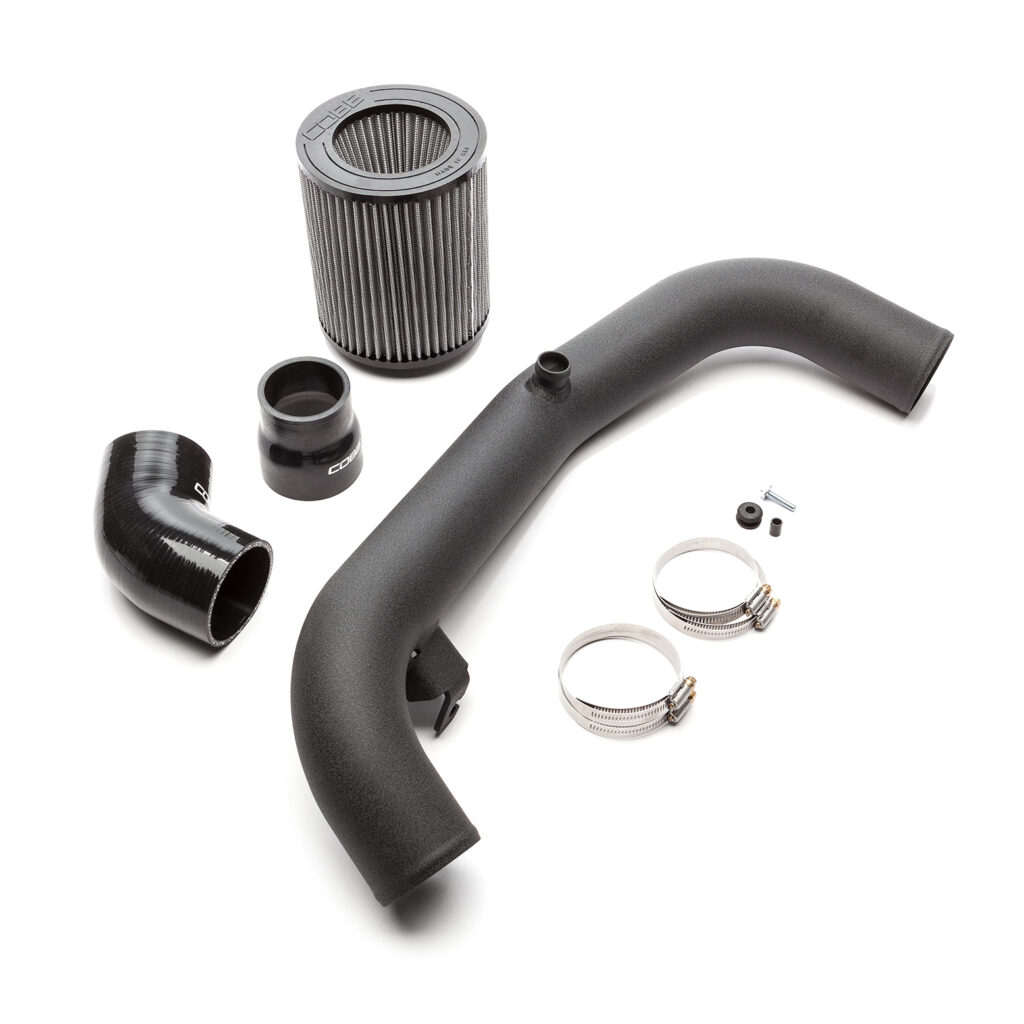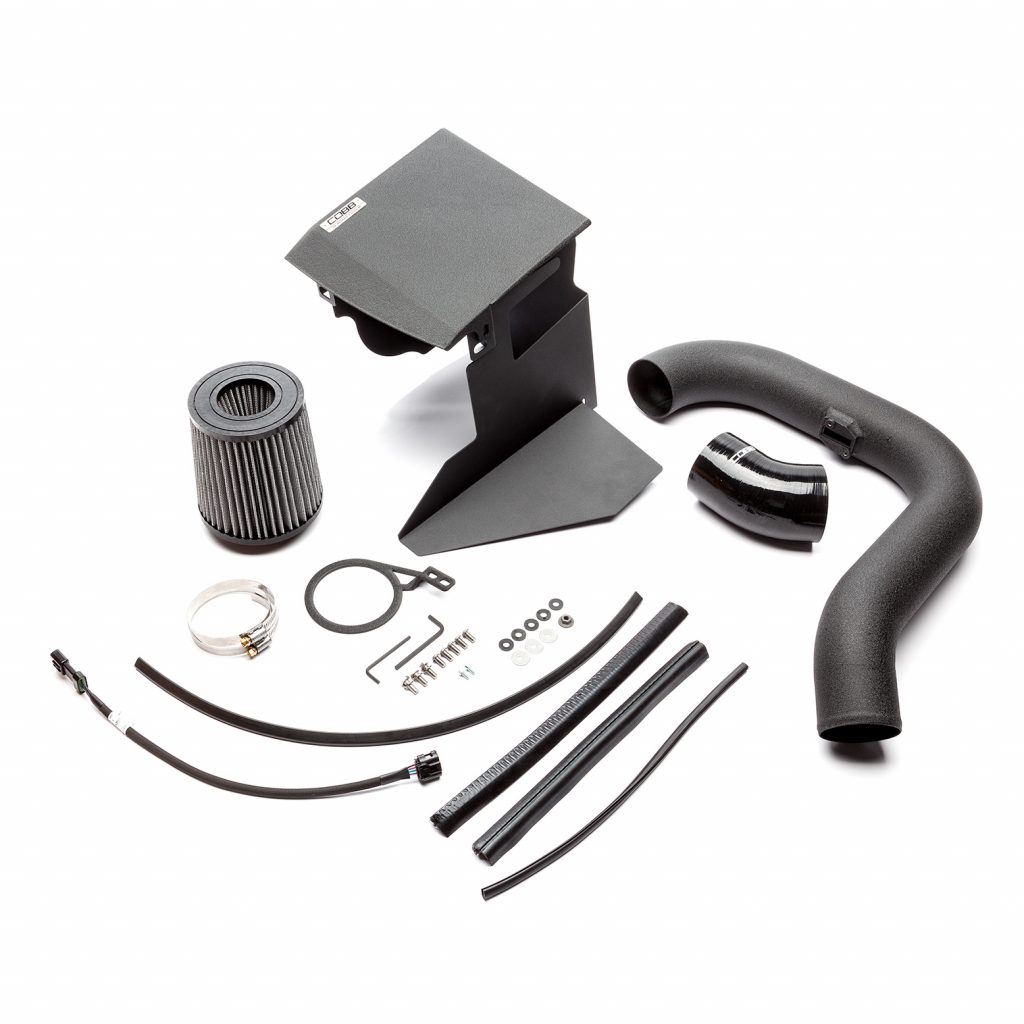Cold Air Intake Pros and Cons
Cold Air Intake Pros and Cons

So you want to upgrade the intake on your vehicle. You know the “Difference Between Cold Air Intake vs Short Ram Intake” and you’ve decided you want the cold air intake. With that decision, it’s important to know the cold air intake pros and cons.
But, before discussing the pros and cons, let’s cover what the intake does and how it does it.
As you might have guessed, the intake is responsible for taking air into the engine. It starts with the air filter and goes through the intake. It will then go through the throttle body on a naturally aspirated car or into the turbo inlet hose on a turbocharged car (see How to Get More Out of Your Air Intake System on Turbo Cars: Upgraded Turbo Inlet Hoses). In either case, if the car’s engine is running, this intake side is under vacuum which pulls air into the system for combustion.
Cold Air Intake
Air. It’s a significant part of the recipe that gives us the right pedal induced joy. But, not all air is created equally. When it comes to air, the amount of oxygen it contains is critical in terms of combustion. Air that has higher oxygen content (can be had through a nitrous system) allows more fuel to be burned. But, you are able to increase the amount of oxygen in the air entering the intake without nitrous. How? Temperature!
Pros and Cons
Pros
The main cold air intake benefit is that it achieves more power by relocating the engine air filter outside of the engine compartment in an effort to take in cooler air. Not only is it out of the engine compartment but it is typically placed at a point low to the ground. The Pro here is two-fold. Firstly, since heat rises, it avoids the hot air rising from the engine bay, brakes, or any other heated component. Additionally, since colder air is more dense, and denser air is lower, this filter placement attempts to attract the densest air possible. The denser the air, the more fuel that can be burned and the more power can be made for better engine performance.
Cons
The cold air intake does typically get denser air than the stock intake. However, since it is longer and more requires more complex routing, it is often more expensive.
This increased complexity also leads to a more difficult and time-consuming installation.
The greatest benefit to the cold air intake system can also be its greatest weakness. More specifically, it’s due to the location of the filter.
Having a low-placed filter outside of the engine bay is great for taking in cooler, denser air. But, that location is also where the most debris and moisture are also present. If your intake ingests a significant amount of water, it doesn’t matter how beneficial it has the potential to be. If your intake ingests a significant amount of water, your car’s engine can hydrolock causing catastrophic damage.
COBB SF Intake and Airbox

The COBB SF intake and integrated airbox looks great and has the combined benefits of a cold air intake without any of the negatives. This system utilizes several unique features in an effort to maintain optimal flow for performance while minimizing turbulence that can cause engine management problems.
SF Intake Features
It uses a custom conical cloth air-filter element (cleanable and reusable) and a CFD-designed velocity stack leading to a unique airflow straightener grid. This straightener grid is specifically designed to smooth the incoming airflow. As air passes the Mass Air Flow sensor, the grid provides more precise readings. This eliminates the “dead spots” experienced by other aftermarket intakes due to turbulence. Most other aftermarket intakes do not utilize these critical design elements.
In order to provide a system that looks as good on the outside as the technical advancements happening on the inside, we utilize a one-piece design constructed from a high-temperature plastic composite. Not only does this save weight compared to the previous metal design, but the plastic composite material also offers much better heat rejection properties that help keep intake air temperatures cooler. In contrast, intake systems constructed using metal castings or piping can actually retain underhood heat and in turn heat the incoming air.
SF Air Box
The SF Air Box adds the benefits of a cold air intake to the outstanding performance of the SF Intake. The factory inlet directs cold air from the front grill to the SF Air, which encloses the SF intake. Hot engine bay air that robs horsepower is prevented from entering the intake system. This unique design also separates rainwater from the intake air, eliminating the water ingestion issues that plague in-fender cold air intakes. Calibrations by way of off the shelf maps on the Accessport have you covered for any necessary tuning changes.

It’s really awesome information about cold air intake benefits. I have got some new additional tips about cold air intake. Hope you will write more details about cold air intake kit. many many thanks for sharing with us.
Thanks.
John Coker
I have a 2014 Subaru Impreza WRX hatchback that has cobb cold air intake n box n after market exhaust when I start to boost it Like lags or goes stupid a min n rebooted up
Hello,
It sounds like the car isn’t running well. It’s tough to make any diagnosis with so little information but, make sure you are on the correct map. The correct map would be Stage 1+SF assuming the exhaust you mention is only the cat-back section. If that is the case, check for air leaks in the intake tract.
Kyle@COBB
I have a 2016 WRX with a Invidia full turbo back exhaust, process west inner cooler, and your Cobb access port… I should mention I have the CVT transmission too… what, if any perks will adding this cold air intake do for my car? Is there any negative effects also?
Hi Trevor,
We have a couple of options compatible with your vehicle intake wise. They will add a little more power and look great under the hood. With your setup though, custom tuning will be required. For more details on custom tuning, visit a Protuner near you: http://www.cobbtuning.com/dealers
Kyle@COBB
Thanks, yeah my wrx is tuned with what I have and will be again if I add more… what kind of issues have you seen with the mass airflow sensor… and this upgrade? And what model exactly would you recommend to avoid these? I’m not interested in racing I just like to get up and go when I want it to
My 2017 FIAT 500 Pop brings back the fun & excitement of the sixty’s(“FixY It Again Tony”). While the basic model (1.4L automatic W/Sport Package) is peppy & responsive, I would like to boost the HP and torque on demand while avoiding potential accidents because of Fiat’s 500 footprint
What would you recommend regarding the above. Cold air induction vs. Short arm?
Hi Peter,
Assuming the intake as the only modification, I don’t think either intake would make any measurable difference in power over the stock unit.
Kyle@COBB
Hey Kyle I have a quick question I have a 2005 Pontiac GTO and I want to install a cold air intake and a lot of people say put it near the wheelbase on the upper left where the driver side is right but my problem is with that witness suck in hot air from the engine as opposed to it being installed near the front a little bit lower from the engine bay on the driver side please let me know
Hi John! We don’t have much experience with the GTO so there very well may be some proven information we aren’t familiar with. In general you want to pull in air as fresh and cool as possible and this usually means somewhere behind the bumper cover on either side of the cooling stack.
Marshall@COBB